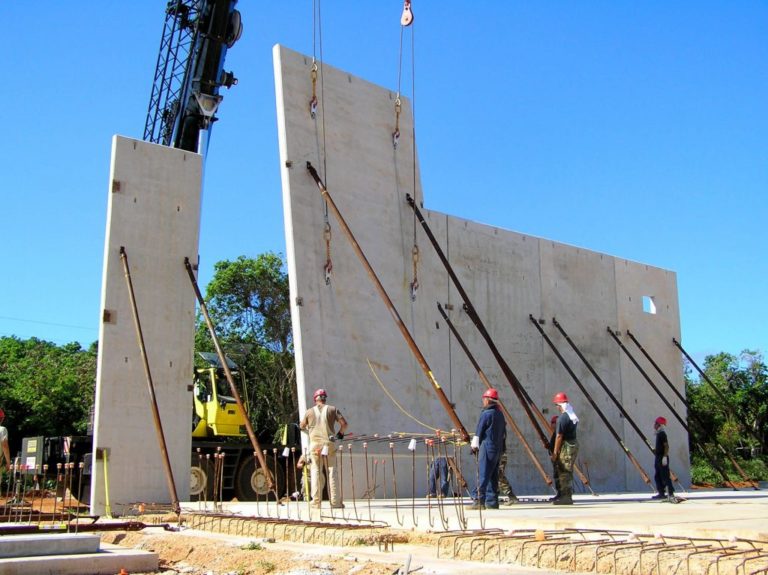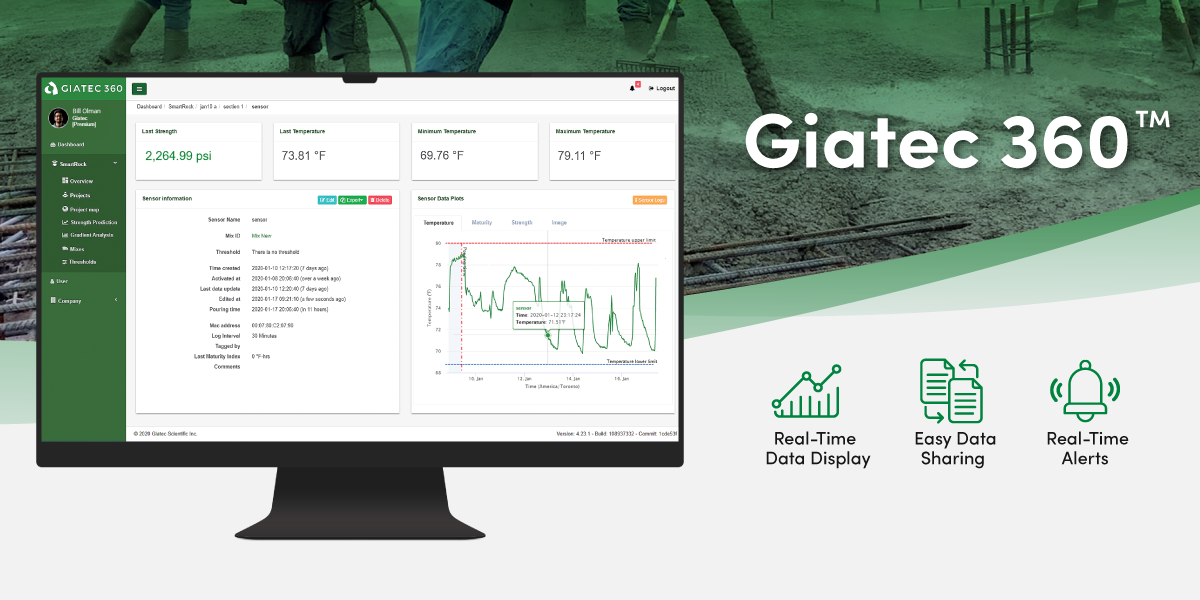Today we are diving deep into the subject of electrical resistivity and concrete durability. We will review what electrical resistivity is, how it is measured, and how this technique can be used to test concrete. But first, let’s check an interesting statistic.

According to a 2013 report by the American Society of Civil Engineers (ASCE), almost 11% of bridge structures in the U.S. are structurally deficient. This makes the durability of existing concrete infrastructures a huge concern in North America. It also brings attention to the lack of reliable quality control tools and procedures that can affect the durability of future construction.
The Concrete Industry’s Resistance to Change
Currently, there is a huge gap between advancing concrete research and the current standard practices in the industry. At Giatec, we are trying to bridge this gap by developing smart testing techniques for quality control and condition assessment of concrete.
Cutting-edge research has led to the development of more reliable and accurate concrete testing technologies. However, the industry still favors old-fashioned methods, showing exactly how resistant to change it really is.
The Problem With Current Concrete Durability Testing Methods
A very good example of these old-fashioned practices is the popular use of compressive strength testing as the main method of ensuring concrete quality. The biggest drawback here is that compressive strength does not always reflect concrete durability.
The only other widely accepted approach for assessing the durability of concrete material is the Rapid Chloride Permeability (RCP) test. Basically, the test takes the electrical charge passed through concrete as an indicator of the concrete’s ability to resist chloride ion penetration. However, apart from requiring a lot of preparation, one should carry out an RCP test on 28-day saturated samples, which takes at least six hours to complete.
What Is the Durability Approach?
Given that concrete is a porous material, its durability depends largely on the properties of its microstructure (i.e. pore size and interconnections).
A finer pore network with fewer connections leads to lower permeability. Meanwhile, a porous microstructure with many interconnections results in higher permeability and, generally, reduced durability.
Thus, we can also evaluate concrete durability by measuring the electrical resistivity of concrete. But before we go into more detail about the use of electrical resistivity in concrete testing, let’s first examine the electrical properties of concrete.
Electrical Properties of Concrete
When concrete is subject to an electric field, the ions start to move in its pores. The ability of concrete to withstand the transfer of ions is what we denote as the permeability of concrete. In this context, we can use a resistivity measurement to assess the size and extent of the connectivity between pores.
What’s more, concrete has a capacitance property that tends to store electrical charge. We should always consider this effect when calculating electrical resistivity.
Another factor in the electrical properties of concrete is moisture. Depending on its moisture content, concrete may exhibit conductive or insulative characteristics. For example, a concrete sample might exhibit high electrical resistance when it is dry, but the same concrete material can have much lower resistance if it is saturated.
All of these factors make it difficult to measure the resistance of concrete.
Solutions for Testing Concrete Durability
Normally, we study the electrical response of concrete using electrical circuit modeling. This means that concrete acts as an electrical circuit, with real resistance and capacitance behavior. Typically, an equivalent circuit model would help to determine the response of that kind of system. These models represent the electrical properties of concrete as well as the electrode-concrete interface.
The two main measurement techniques developed based on these models are the Wenner probe techniques, namely the two-point and four-point uniaxial techniques.
The two-point technique delivers what is usually called bulk electrical resistivity. The reason is that the current passes through the bulk of concrete, and the resistance is an average of the entire concrete bulk between the two electrodes.
The four-point technique, a.k.a. surface electrical resistivity of concrete, makes it possible to measure the electrical resistivity from the concrete surface. This is important for devices used in field inspections. It is more sensitive to the local properties of concrete and the variation of moisture on the concrete surface.
Parameters Affecting Electrical Resistivity
The following parameters affect the inherent electrical resistivity of concrete:
- Concrete porosity (connections between pores, the conductivity of pore solution, etc.)
- Moisture content
- Concrete temperature
- Geometry of the specimen
- Electrical signal frequency
However, if we account for the effect of these factors in the calculations, any resistivity measurement technique should deliver the same resistivity value.
Now, let’s examine some of these parameters in greater detail.
Concrete Porosity
The porosity of concrete can significantly affect electrical resistivity measurements. The more porous the concrete, the more space for ionic movement. These pores can make way for chemical agents to penetrate and affect concrete durability. We should also consider the electrical properties of the pore solution, which can influence the total electrical resistivity of concrete.
Moisture Content of Concrete
As mentioned above, variations in moisture content can affect the electrical resistivity of concrete. Increasing the moisture content will result in a decrease in electrical resistivity. This is an interesting relationship because one can track the changes in the moisture content of concrete by measuring its electrical resistivity.
Concrete Temperature
Another influential parameter is temperature. In general, an increase in temperature decreases the electrical resistivity of concrete. This can be explained by the ARRHENIUS equation. In simple terms, an increase in temperature will increase the rate of ionic movement. And more ionic movement means more electrical conductivity and lower resistivity values.
Geometry of the Specimen
In theory, resistivity is a property of concrete materials, and the shape of the sample does not affect it. However, we have to consider the confined geometry effect of the measured values.
Certain mathematical formulations can be used to determine the geometry factor to get the correct resistivity value for any sample size or shape. One approach is to fill the same geometry with a known electrical resistivity liquid and extract the geometry factor from the resistance and resistivity measured for that specific liquid.
Electrical Signal Frequency
The results of electrical resistivity tests may vary depending on the frequency range that is used. Most tests use alternating current (AC). When testing on low frequency, the concrete-electrode interface becomes important. The effect of concrete bulk is well determined using a higher frequency range.
Applications of Electrical Resistivity Testing
We can use electrical resistivity testing to:
- Ensure quality
- Measure chloride permeability
- Determine the Chloride Diffusion Coefficient
- Detect cracks
- Determine the setting time of fresh concrete
- Measure moisture content
The electrical resistivity technique can also replace more traditional tests such as the previously discussed RCP method, which takes more time and money to implement.
In theory, if we combine and simplify the famous Ohm’s Law and equations relating electrical charge and the current, we can demonstrate a linear relationship between the RCP test results and the conductivity of concrete. However, in practice, a non-linear relationship is observed. We can explain this through the generation of heat during the RCP test, which changes the test conditions and the properties of the pore solution.
Certainly, there is proof that there is a strong relationship between the electrical resistivity of concrete and the diffusion coefficient of concrete, which is an important factor in the service life design of new structures, as well as in the maintenance and rehabilitation of existing structures.
There is a linear relationship between the electrical resistivity of concrete in SSD conditions and the diffusion coefficient. This concludes that resistivity can be used as a reliable technique to obtain the diffusion coefficient of concrete required in the service life estimation of structures.
In short, we can confidently state that electrical resistivity measurement techniques can be used to assess concrete durability, both fresh and hardened. If the effect of influential parameters is correctly taken into account, the electrical resistivity can deliver reliable results.











3 Responses
Does steel reinforcement influence the conductivity measurements?
Thank you so much for your comment. Yes, the steel reinforcement does influence the resistivity readings. The reason behind that is twofold. Firstly the steel will draw the current preventing the full resistivity reading of the concrete. Secondly, as steel is very conductive, the results obtained will have discrepancies, as the material assessed is the combination of concrete + steel, not only concrete.
To prevent that, one can identify the location of the rebars prior to the test. This can be done using rebar detectors, GPR or by the blueprint interpretation.
Its a good research but the graphs should be included for someone to quickly see the how the quantities relate.